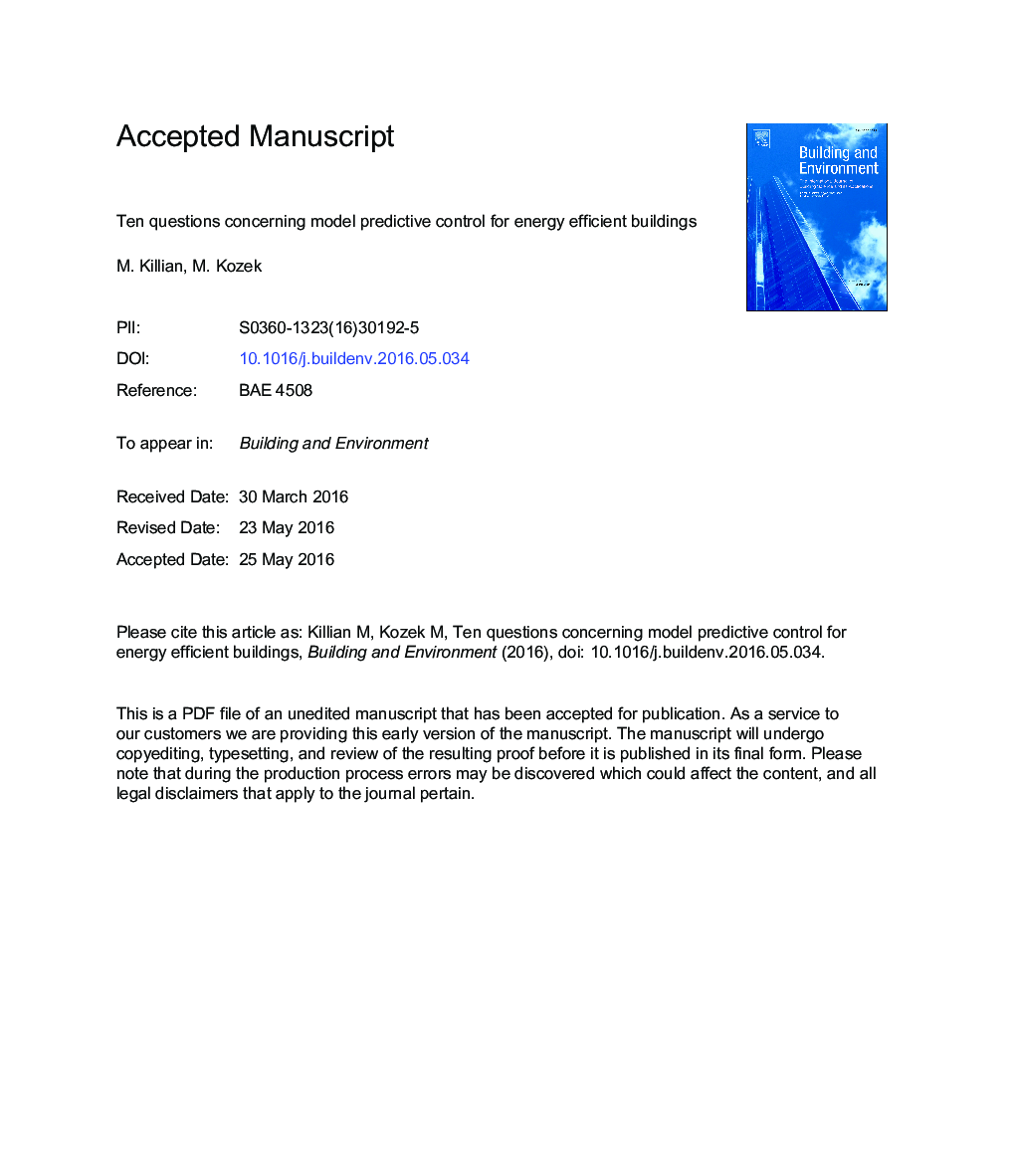| Article ID | Journal | Published Year | Pages | File Type |
|---|---|---|---|---|
| 6698905 | Building and Environment | 2016 | 15 Pages |
Abstract
Buildings are dynamical systems with several control challenges: large storage capacities, switching aggregates, technical and thermal constraints, and internal and external disturbances (occupancy, ambient temperature, solar radiation). Conflicting optimization goals naturally arise in buildings, where the maximization of user comfort versus the minimization of energy consumption poses the main trade-off to be balanced. Model predictive control (MPC) is the ideal control strategy to deal with such problems. Especially the knowledge and use of future disturbances in the optimization makes MPC such a powerful and valuable control tool in the area of building automation. MPC compromises a class of control algorithms that utilizes an online process model to optimize the future response of a plant. The main benefits of MPC are the explicit consideration of building dynamics, available predictions of future disturbances, constraints, and conflicting optimization goals to provide the optimal control input. MPC technology has been applied to process control for several decades and it is an upcoming field in building automation. This is a consequence of the large potential for saving energy in buildings and also allows to maximize the use of renewable energy sources. Furthermore, the added flexibility enables to integrate such buildings in future smart grids. In this work ten questions concerning model predictive control for energy efficient buildings are posed and answered in detail.
Related Topics
Physical Sciences and Engineering
Energy
Renewable Energy, Sustainability and the Environment
Authors
M. Killian, M. Kozek,
